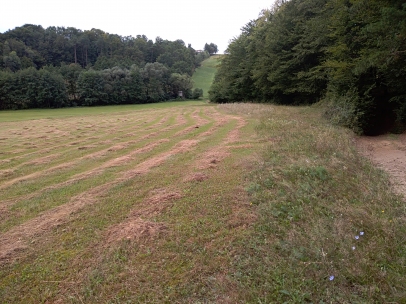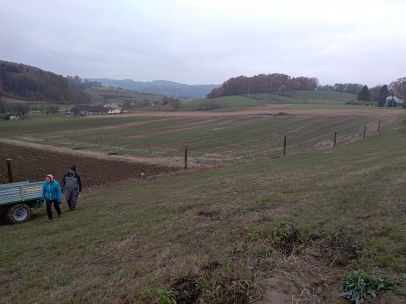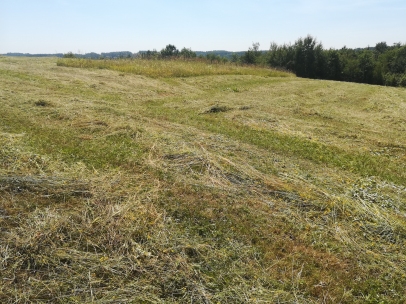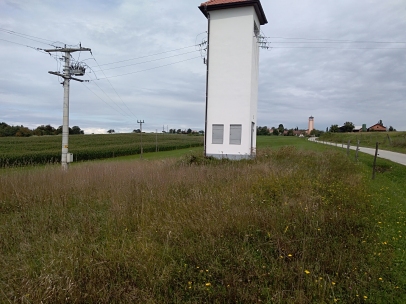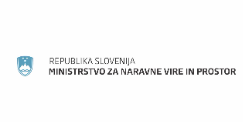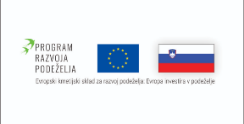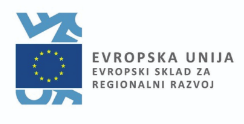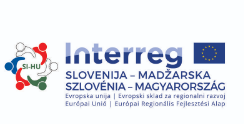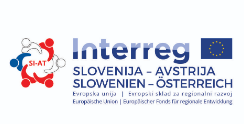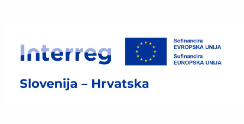In 2019 we continued with the restoration of the cultural landscape in Goričko
In order to make 106 ha of abandoned meadows attractive again not only for meadow species of butterflies and birds, but also for visitors to Goričko and locals who would like in the future to use them for production of fodder, we began to restore them in 2018. Among them 56 ha of meadows, were purchased and are now state owned. For remaining we concluded contracts with the owners of the meadows. In total, there are 676 parcels in 42 cadastral zone within the entire Natura 2000 site Goričko. We addressed more than 300 different land owners. It was a demanding task, as the current and past owners live not only in Goričko or Slovenia, but also in nine other countries around the world, from the United States of America to Australia. Meadow restoration involves mowing and partial removal of the woody overgrowth, where it is necessary. Depending on the state of the meadows , we mowed meadows once, twice or three times in a year.
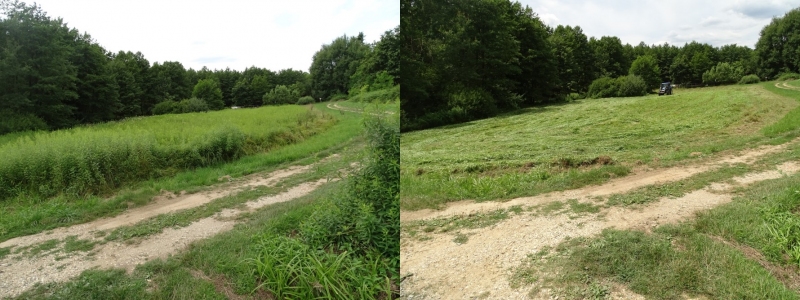
Before and after (photo: T. Törnar)
Conservation agreements were signed with the land owners of 5 ha of meadows for the Scops owl, 7.8 ha of meadows for the woodlark, 2.5 ha of meadows for the scare and the dusky large blue and 2.3 ha of the marsh fritillary. Upon conservation agreements owners of the meadows will have to implement measures such as a suitable time of the mowing or for leaving parts of the meadows unmown. Conservation agreements had been concluded with the owners of forty willows, which are habitat trees of the hermit beetle, and with the owners of fifty fruit trees with suitable cavities for the nesting of the scops owl. Owners will upon agreements get a payment but in turn they will have to prune the trees and to remove the european mistletoe several times in the coming years.
Unmown strip (photo: T. Törnar)
We devoted a lot of time to the preparation of the first permanent exhibition on bats in Slovenia, which we set up together with the locals in the former school in Kančevci. In the last quarter of 2019 we together with agricultural advisory service actively encouraged owners of meadows and high-trunk orchards to leave parts of meadows unmown until autumn so that butterflies and grasshoppers could reproduce more successfully and therefore foraging conditions for the scops owl would be improved. At the same time, we signed agreements with the owners of the hedges, in which the scops owl predominately forages.
Hedgerows are important feature in the landscape (photo: G. Domanjko)
In September, first press conference of the project was held with an emphasis on the activities carried out so far. At the beginning of 2019, the first issue of the newsletter on the topic of bats was published, and in the summer months, project employees carried out several nature education days for the children. For nature lovers, we carried out two ornithological guided tours in Kančevci, where the participants got to know the woodlark and the scops owl. In April we visited the Mühlviertel Nature Park in Austria where project for conservation of woodlark is being implemented for several years now. The good practice and measures could be transfered into slovenian agricultural policies.

